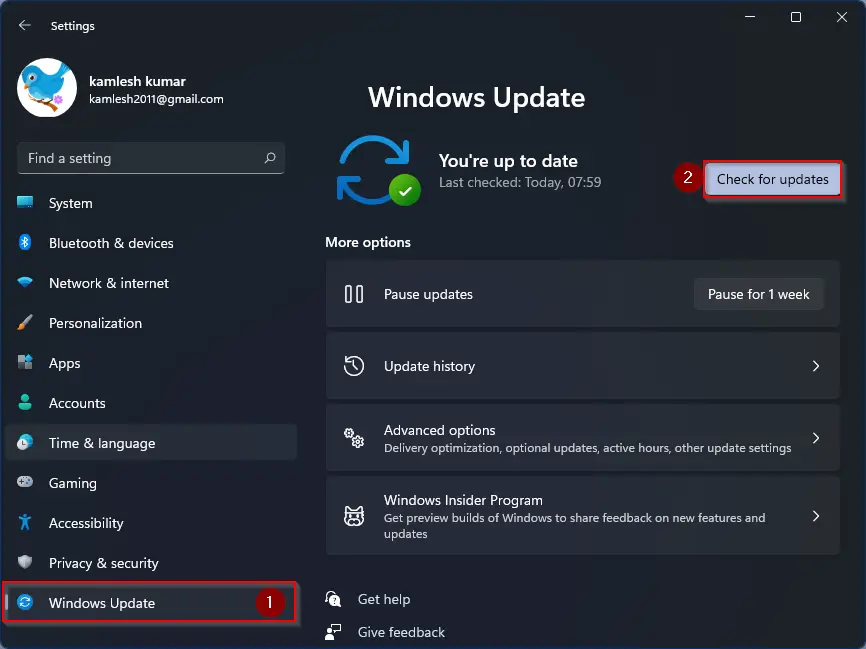Fix Windows 10 Laptop Not Charging
In this article, I will discuss how to fix a Windows 10 laptop that is not charging.
Verify Power Supply Functionality

To verify the power supply functionality on your Windows 10 laptop, follow these steps:
Step 1: Check the power cord and electrical connector for any damage or loose connections. Make sure everything is securely plugged in.
Step 2: Test the power supply with a different outlet to rule out any issues with the power source.
Step 3: If you have another power supply or battery charger that is compatible with your laptop, try using it to see if the problem lies with the original power supply.
If after following these steps the laptop is still not charging, it may be a hardware issue that requires professional attention.
Execute a Forceful Restart

One way to attempt to fix a Windows 10 laptop that is not charging is to perform a forceful restart. To do this, follow these steps:
1. Press and hold the power button on your laptop for at least 10 seconds.
2. Release the power button and wait a few seconds.
3. Press the power button again to turn on your laptop.
By performing a forceful restart, you are essentially resetting your laptop’s hardware and software components, which may help resolve any issues preventing it from charging properly. If the problem persists after trying a forceful restart, you may need to explore other troubleshooting options such as checking the power cord, USB hardware connections, or updating your Windows system through Windows Update.
Acquire the Latest Software Updates
To fix your Windows 10 laptop not charging, one of the first things you should do is ensure that you have the latest software updates installed. Sometimes, a simple software update can resolve charging issues on your laptop.
Check for Windows updates by clicking on the Start menu, selecting Settings, then Update & Security, and finally Windows Update. Install any available updates and restart your laptop to see if this resolves the charging problem.
If updating your Windows software does not fix the issue, you can also try updating the firmware on your laptop. Firmware updates can sometimes address hardware issues, including charging problems.
Check the manufacturer’s website for your laptop model and look for any available firmware updates. Follow the instructions provided to install the updates and see if this resolves the charging problem.
If updating the software and firmware does not work, you may need to check the USB hardware and battery charger. Make sure the USB port and electrical connector are clean and free of debris.
Try using a different power cable or battery charger to see if the issue is with the hardware. You can also try using a different power outlet to rule out any electrical issues.
In some cases, performing a System Restore can also help resolve charging issues on your Windows 10 laptop. This will revert your laptop’s settings to a previous state where charging was working properly.
Go to Control Panel, select System and Security, then click on System, and finally choose System Protection. Follow the instructions to perform a System Restore and see if this resolves the charging problem.
Assess Battery Icon Status
To fix your Windows 10 laptop not charging issue, start by checking the battery icon status on your device. Look for the battery icon in the taskbar at the bottom right corner of your screen. If the battery is not charging, the icon may display a specific status.
If the battery icon shows a lightning bolt symbol, it indicates that your laptop is currently charging. However, if the icon is not showing any activity or if it displays a plug-in symbol without the lightning bolt, there may be an issue with the charging process.
To further assess the battery icon status, you can also check the battery percentage displayed next to the icon. If the percentage is not increasing while the laptop is plugged in, there may be a problem with the charging connection or the battery itself.
If you notice any unusual behavior with the battery icon status, it is recommended to troubleshoot the charging issue further to identify and resolve the underlying cause.
Address the “Plugged In, Not Charging” Issue
If your Windows 10 laptop is showing the “Plugged In, Not Charging” message, there are a few steps you can take to troubleshoot and potentially fix the issue.
First, check your power cable and plug it in securely to ensure a good connection. Sometimes a loose connection can prevent the battery from charging properly.
Next, try using a different power outlet or power cable to rule out any issues with the current setup. A faulty outlet or cable could be the culprit behind the charging problem.
If the issue persists, check the battery health status in the Control Panel. You can usually find this information under the Power Options or Battery settings. If the battery is degraded or damaged, it may need to be replaced.
You can also update your device drivers by going to Device Manager and checking for any available updates. Outdated or corrupted drivers can sometimes cause charging issues.
Additionally, resetting the power management settings on your laptop can sometimes resolve charging problems. To do this, go to Device Manager, find the Battery section, and uninstall the battery driver. Then restart your laptop, and the driver will reinstall automatically.
Update or Restore as a Potential Fix

If your Windows 10 laptop is not charging, one potential fix is to update or restore the system.
Before proceeding with this fix, make sure to backup any important files or data on your laptop.
To update your Windows 10 laptop, go to the Start menu and click on Settings. From there, navigate to Update & Security and check for any available updates. Install any updates that are available and restart your laptop.
If updating does not resolve the issue, you can try to restore your laptop to a previous point in time when it was functioning properly. To do this, go to Control Panel and select System and Security. Click on System and then choose System Protection. From there, select System Restore and follow the on-screen instructions to restore your laptop.
After updating or restoring your Windows 10 laptop, check to see if the charging issue has been resolved. If the problem persists, you may need to consider seeking professional help or contacting the manufacturer for further assistance.
Explore Causes of Battery Charging Issues
- Check power source:
- Make sure the power outlet is working by plugging in another device.
- Try a different power adapter to rule out a faulty adapter.
- Inspect charging port:
- Look for any physical damage or debris in the charging port.
- Clean the charging port with a soft brush or compressed air to remove any dirt or dust.
- Update drivers:
- Open Device Manager by pressing Windows key + X and selecting Device Manager.
- Expand the Batteries section and right-click on Microsoft ACPI-Compliant Control Method Battery and select Update Driver.
- Check battery health:
- Open Command Prompt as an administrator by searching for CMD in the start menu, right-clicking on Command Prompt, and selecting Run as administrator.
- Enter the command powercfg /batteryreport to generate a battery health report.
Comprehensive Guide to Fix Battery Charging Problems
| Issue | Possible Solution |
|---|---|
| Battery not charging | 1. Check power adapter and cable 2. Restart your laptop 3. Update battery driver 4. Check power settings |
| Battery draining quickly | 1. Close unnecessary programs 2. Adjust power settings 3. Calibrate battery |
| Overheating during charging | 1. Clean laptop vents 2. Use laptop on hard surface 3. Avoid using laptop while charging |
| Charging port damaged | 1. Check for physical damage 2. Replace charging port if necessary |
Consider Submitting a Service Order if Issues Persist
If you have tried all the troubleshooting steps mentioned in the article and your Windows 10 laptop is still not charging, it may be time to consider submitting a service order.
Contact the manufacturer of your laptop or a certified technician to diagnose and fix the issue.
If the problem lies with the hardware, they may need to replace the battery or the charging port.
Consider backing up your data before sending your laptop for service to avoid any potential data loss.
It’s important to address charging issues promptly to avoid further damage to your laptop’s battery or components.
Taking proactive steps to resolve the problem will ensure your laptop remains in good working condition.
Consider submitting a service order if issues persist to get your laptop back up and running smoothly.
FAQs
How do you fix a dead laptop that won’t charge?
To fix a dead laptop that won’t charge, start by ensuring the laptop is properly plugged in and using the correct power adapter. You can also try booting without the battery, letting the laptop and adapter cool down, updating drivers, and checking the power cable for any breaks.
How do I reset my laptop battery Windows 10?
To reset your laptop battery in Windows 10, first disconnect the charger until your laptop reaches 100% charge. Then allow the battery to discharge to 0% until the laptop powers off. Finally, reconnect the charger without booting up your system.
Why is my Microsoft laptop not charging?
Your Microsoft laptop may not be charging due to issues with the power supply or connections. Make sure the power supply is working and that all connections are secure. Avoid plugging anything into the USB charging port on the power supply. If you notice any damage, contact Microsoft for assistance.
How do I enable USB-C charging on my laptop?
To enable USB-C charging on your laptop, you can adjust the settings in the power/battery section. Look for the option to switch Type-C’s output to determine whether it should receive power. If your USB-C charger isn’t working, ensure that the settings are correctly set to receive power.


